Features of goat willow "Kilmarnock" and rules of care
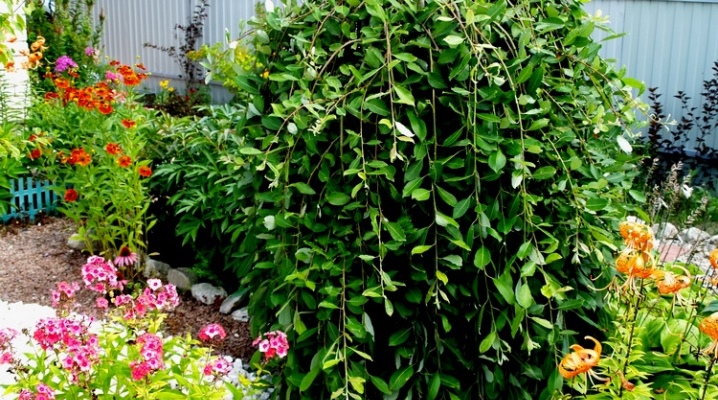
Kilmarnock fits beautifully into any landscape design. Willow on a trunk, with dense foliage to the ground, attracts attention and bewitches. More often it is called "weeping". Let's see why designers choose this particular willow, let's talk about planting and care.
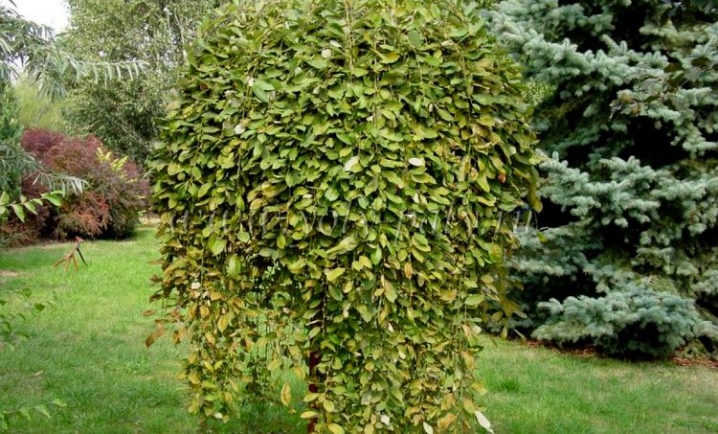
Description
"Kilmarnock" is an ornamental tree grafted onto a trunk. The crown of this willow has a dense umbrella shape. The shoots of the tree usually reach the ground. The leaves have an oblong shape of a matte green color, in autumn the foliage turns yellow. Typically, goat willow reaches a height of 100-130 cm, and a width of 150-180 cm. Goat willow "Kilmarnock" is an unpretentious plant.

Landing
Kilmarnock is a short, decorative tree that loves light and does not tolerate flooding. Therefore, it is better to plant a weeping willow in an open area, where there is no waterlogging of the soil. It has no special requirements for the composition of the soil, but it is better to feed the crop no more than twice a year. You can fertilize the tree with mineral fertilizers suitable for willow.
If your area has particularly harsh winters, then Kilmarnock is not for you. In such regions, it is better to plant unvaccinated willows.
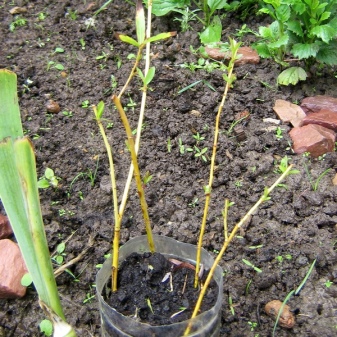

Planting is best done in early spring or late autumn. There are several recommendations, following which, you will grow a beautiful small tree with a dense crown on a trunk.
- Choose a location for your tree, taking into account willow preferences and site design.
- Prepare the pit. The pit should be about 0.5 meters deep and wide. Lay out drainage 15-20 cm thick at the bottom of the pit. It is better to make drainage from broken brick, which will prevent root decay. A soil mixture with mineral fertilizer or compost from humus must be poured over the drainage. The landing pit is ready.
- Willow planting. Place a stalk in the prepared hole. The stalk must be prepared for planting, that is, it must have roots. To do this, the cutting is placed in water 2 weeks before planting. The soil extracted from the pit is mixed with fertilizer and the cutting is covered. The soil is tamped and watered a little.
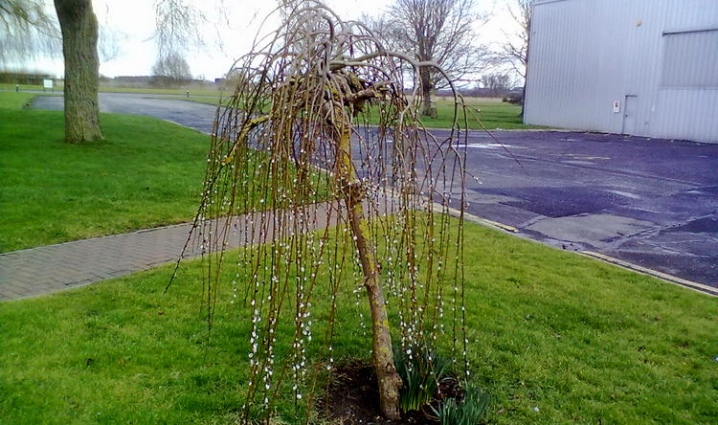
Willow tree care
Watering
After you have planted a tree, it should be watered 1-2 times a week. Check the soil around the trunk - if the soil dries up and cracks, then it must first be watered and then loosened. Be careful: when watering, water should not get on the leaves of the tree. Proper watering will prevent willow fungal diseases.

Fertilization and feeding
Remember to fertilize the soil around the tree trunk. Top dressing is done twice a year. You need to choose fertilizers based on your soil type. Most often, special mineral fertilizers for willow are well suited, but humus, compost can also be used, in the spring it is worth feeding 60-80 g of nitroammofoska.

Most often, the soil in gardens is rich in minerals, but it is low in organic matter. Therefore, it is best to always choose organic fertilizer.
Winter care
Winter care is not required. The main thing is to prepare the weeping willow on the trunk for wintering. To do this, it is advisable to wrap the tree trunk with a covering material. Attention: for the winter, the trunk of a young tree must be insulated.

Pruning
In order for a beautiful willow crown to form on a trunk, you need to remember about pruning the branches. Young trees especially need pruning, especially before the age of three. Shoots are usually cut immediately after flowering is complete. After pruning small seedlings, you should have at least one active bud on the shoot. Long branches are cut in two thirds, such pruning promotes active growth and a dense willow crown on the trunk.
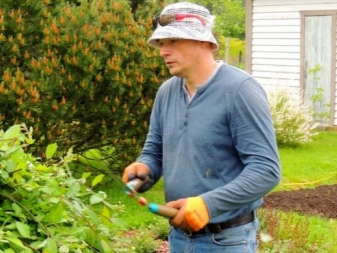
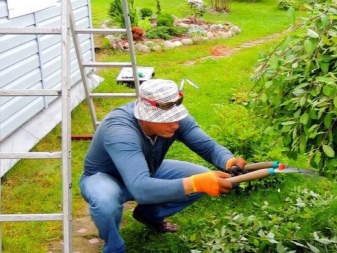
Reproduction
Kilmarnock is propagated by grafting or seed. Propagation by cuttings rarely gives the expected result. But if you decide to propagate the goat willow yourself, then you need to collect the seeds and sow them immediately. If you overexpose the seeds, then later they will not germinate well. However, this process is laborious, and it is better for non-professionals to take a grown seedling in a nursery.
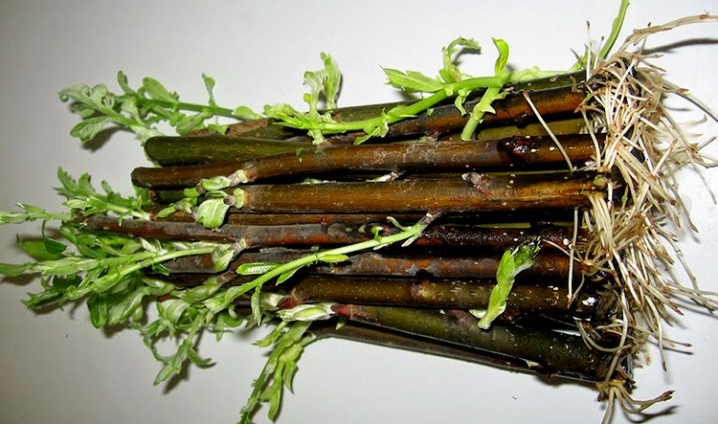
Diseases and pests
Willow "Kilmarnock" is quite resistant to disease, but it can still happen that the tree gets sick. An infected tree can be identified immediately.
- Powdery mildew. Most often, weeping willow is affected by powdery mildew. This fungus causes a white coating on the leaves. Infected leaves turn yellow and fall off quickly. The affected culture is treated with antifungal drugs for trees, and the yellowed and affected leaves are removed and burned. It is also necessary to collect all the fallen leaves around the tree and burn them.
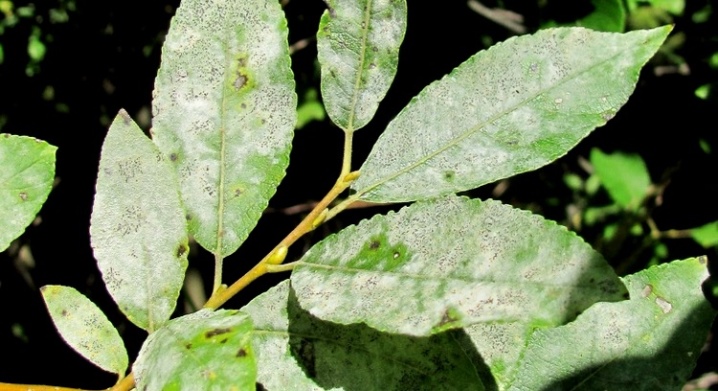
- Black spot. There is another disease - "black spot", which is also caused by fungi. This disease is treated with fungicides. For the prevention of a fungal disease of the tree, fungicides are best used in spring and autumn one time at a time.
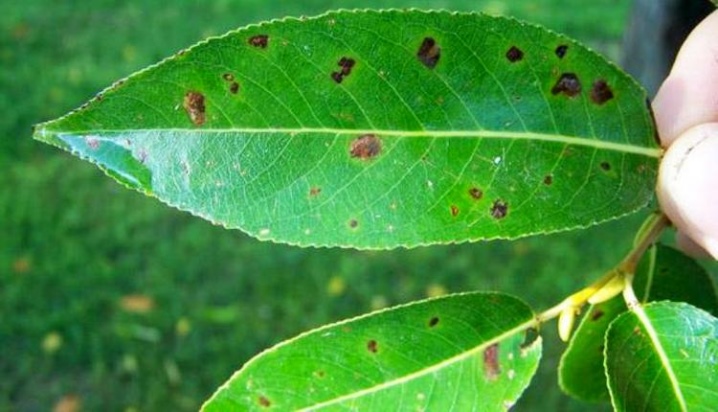
- Scab. Occasionally, during heavy rains, Kilmarnock can become infected with scab. This disease can be easily identified by the crown of a tree, it will look like it has been burnt by fire. It is necessary to fight this disease according to the following scheme: all infected shoots, branches, leaves are cut off and burned. Places of damage must be treated with copper sulfate and covered with oil paint or drying oil.
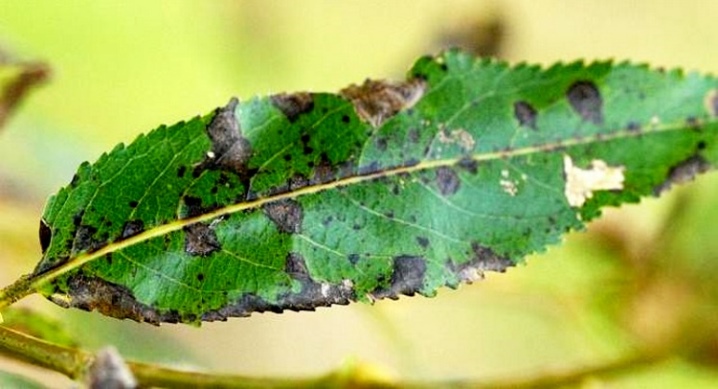
Often goat willow is affected by pests.
- Flower fly. Flower fly larvae eat willow foliage, shoots and flowers. Those of them that get into the soil destroy the roots. Therefore, to combat it, the trunk and the soil around the willow are sprayed with a weak solution of potassium permanganate once a week.
- The willow roll infects the leaves of the tree. Affected leaves curl up into a tube. To combat the willow leaf roll, double spraying with "Fitoverm" or "Decis" is used.

Willow in landscape design
Stamp willows are becoming more and more popular in landscape design. Due to their original shape and small size, they fit beautifully into the design of the site. Given the unpretentiousness of the plant, the free choice of location on the site provides a great opportunity to create the most original design solutions. This plant is easily integrated into any composition.
Goat willow on a trunk can be planted next to a dry stream. This composition is often used in small Japanese-style gardens.

Since the size of the tree is small, this plant beautifully and harmoniously fits into the composition of the alpine hills with a small waterfall. In the spring, when Kilmarnock is in bloom, this view can be captivating. And in summer, when the flowers are blooming, the weeping willow creates a beautiful green background for the whole composition.
Recently, a design trick has become very popular: a plant waterfall. Three willows are planted in a circle so that their branches subsequently fall down, creating the illusion of a waterfall. Outside the trees, stones or finishing materials for the waterfall are laid out. Inside, between this border and the trees, pebbles are lined. As a result, the composition resembles a green plant waterfall. It looks very impressive.

Also, "Kilmarnock" is used in the design of the site, as a single composition. In this design, the willow on the trunk resembles an open green umbrella. A tree is planted in an open area, and the rest of the space is sown with a lawn.
Such a composition with dense foliage to the ground attracts attention and bewitches.
For more information about the Kilmarnock goat willow, see the video below.



































































The comment was sent successfully.